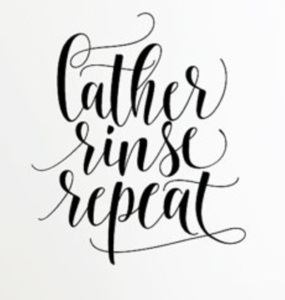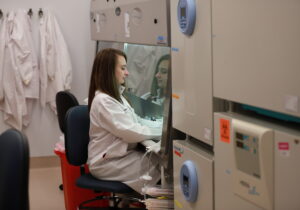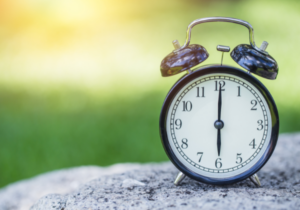End of Summer Academic Sanity Saver: Post Undergrad Lab Jobs Now!
There is no commodity as important as time to academics. With the last few days of July slipping away, now is the perfect time to get a jump on other labs and get ready to scoop up all the awesome eager undergrads when they hit campus.
 Many colleagues under utilize undergrads which is bananas. These folks are motivated AF, have shown they can juggle a zillion things and the last thing I want to do is to act like science doesn’t need their help. We do!
Many colleagues under utilize undergrads which is bananas. These folks are motivated AF, have shown they can juggle a zillion things and the last thing I want to do is to act like science doesn’t need their help. We do!
I would argue that even non-teaching faculty have an obligation as a part of a university community to train as many students as they can. This doesn’t mean I’m training them to be scientists. I’m just training them to appreciate the scientific process. I want everyone of my students, from the person who organizes our calendars and orders supplies, to know scientists are real, there is a lot of awesome stuff to be done and we need their help. And if they go back to their parents, who hopefully vote, and share this message, all the better.
On the practical side of things, these bright little balls of energy easily save me 5-8 hours a week by doing administrative work, proofreading, organizing my calendar and writing up protocols. They also save my grad students and fellows time by maintaining data bases, helping with graphics and photography, stocking experimental stations, and lending their eager hands to experiments. Not only are undergrads abundant, they are also a heck of a deal. Almost every university has a population of these workers who have Federal Work Study awards. You pay only about 50% of their salary while the government pays the rest*.
My lab has an equal number of undergrads to grad students and fellows. While I haven’t gotten things perfect, here’s a few tips on things that work.
1. Start now! Undergraduates are going to be on campus in less than a month. July is the perfect time to reach out to your Federal Work-study office and get your positions listed. About half my traffic for jobs comes from our FWS office. The others come from hits to our internet site, so I try to keep postings and descriptions of jobs up to date.
2. Personally interview and select students. As a new PI, I recommend attending a work-study job fair in person. Having 40 undergrads come by your table in a 3 or 4-hour period helps you identify the kinds of go-getters you want in lab. It hones your ability to identify both strengths and unconquerable gaps in applicants. In truth, I don’t go to the fairs because my trainees hire their own undergrads, but interviewing a lot of undergrads quickly is a win on a lot of levels for newbies.
3. Be open-minded. Some our best workers didn’t have a science backgrounds. Aspiring literature or health and society majors make great editors. Business majors love spreadsheets, ordering, finding for new tech tools for us and can negotiate like champs. Advertise for motivated and meticulous people.

Pretty sure this was exploitive on Mr. Miyagi’s part.
4. Wax On/Wax Off. My students get paid to do admin and support tasks for a full semester. The techniques your lab uses may be less rigid, but our undergrads need to learn their jobs the same way the Karate Kid did. Lots of ‘waxing on’ and ‘waxing off’. After a semester with Mr Miyagi’s method, undergrads can seamlessly find the reagents they need, know what is in them and get down to business for the next three years.
5. Pick the young ‘uns. Did I just try to slide by students who are in lab for the next three years and hope you didn’t notice? I did. That’s because I’m a huge fan of hiring and retaining freshman and sophomores. Not only do you get to have three blissful years of watching them become lab ninjas, but you also can write an informed letter of recommendation when they leave.
6. Know and honor them. Everyone in my lab, full time or not, gets a bio with their picture and a shout out about what I see as their strengths. They are a part of the team. I’m also a big fan of stickers for great experiments, thoughtful insights into papers and general awesomeness. At the end of the year, we order in some lunch or snacks and have an open chat time to see what we can do to lab a better experience for the next group. I also hunt down my graduates families at graduation time and let them know how much I appreciate entrusting us with their kiddos. It’s a big and fun warm fuzzy fest.
7. Lather, rinse, repeat. Once you’ve got a year of this under your belt, take your last group of undergrads to the undergrad work-study fair next August and let them help you identify good fits for the lab. This years recruits are going to be your best tools in hiring next years team members.
next August and let them help you identify good fits for the lab. This years recruits are going to be your best tools in hiring next years team members.
8. Don’t forget they are trainees. These kids are going to be famous one day, so put them on your CV now as your trainees so you can claim you ‘knew them when’!
Good luck with your baby science ninjas.
*To be super clear, I never take lab ‘volunteers’. Either students get credit for their research or they are hired thru the Federal Workstudy Office/ Student Employment. I am not a fan of unpaid employees. And by ‘not a fan’, I mean I consider it to be the height of exploitation and you are a very bad person if you do it.
DID I MISS ANYTHING? I DO LOVE A COMMENT OR TWO SO DROP SOME WISDOM ON ME!






1 Comment
I used to teach classes explicitly so I could steal the smart kids out of class and have them work for me – first as student workers, and for many of them later, as either full time employees or grad students.